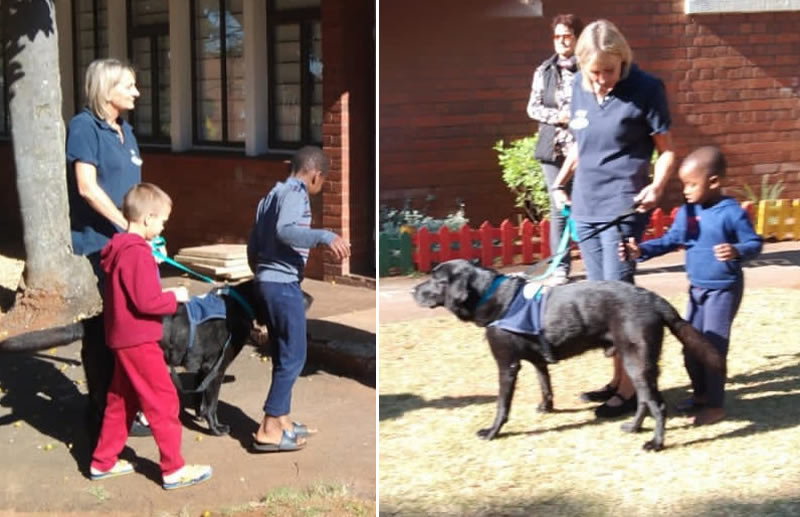
Sep 28, 2022 | Blog
We live in a world that constantly bombards our children with messages suggesting that happiness, recognition, ……life itself, is a result of what we can accumulate; material possessions, likes on Instagram, selection for the 1st team, a degree…and so the list goes on.
Truth is that this is not the case and once this reality settles, they are left with an emptiness that over time can leave them with negative feelings and even depression.
However, as parents we can help our children develop a mechanism to protect them from this trap and its simpler than one would think…teach your child how to practice gratitude.
When we express gratitude, we begin to experience satisfaction and joy. It increases feelings of happiness, optimism, and hope. To have gratitude is to have an attitude of thankfulness. A practical way to develop this is to encourage your child to keep a daily ‘’gratitude journal’’.
To help your child start their journal give them the following prompts;
- Who is a person for whom you are grateful today?
- Did something happen today which you are thankful for?
- What is a simple thing in your life that you can give thanks for today?
- Was there a kindness shown to you today by someone for which you feel thankful?
- Is there a talent, skill, or strength that you have that you can give thanks for?
Speak to you child about how we can lose our happiness when we focus on what we don’t have instead of all that we do have.
Let gratitude become an attitude of thankfulness in your family and watch your child grow in confidence, tolerance, and contentment.

Sep 23, 2022 | News

Educators and learners from Carrington Primary School with their amazing donation of clothing for our children.
Imagine our surprise when the principal of Carrington Primary School, Mrs Kunene, visited our child care centre on Friday 16 September to hand over a substantial donation of clothing for our children.
She brought with her three of the school’s educators and three learners, who were among the many who collected the clothing as their Mandela Day initiative. We were not only impressed by the generosity of the staff and children, but also knocked out by the way the school provided the opportunity and encouraged everyone to show their caring concern for children who are less fortunate. Sincere thanks to all concerned.
At a time when the cost of living has risen steeply, and many people are struggling to make ends meet, we are so grateful for the ongoing, generous support of our local community and friends.
Aug 24, 2022 | Blog
All children are unique in their own way, and one of our top priorities as care givers is to identify and nurture those qualities that make our children who they are. It’s not as easy as it sounds, especially because life is full of obstacles that cause challenges. Yet in so many ways, it is simpler than we think. Embracing your child for who they are is one of the greatest gifts you can give him or her.
Just like crayons in a box, each child has their own colour that contributes to the big picture of life. Children are individuals and no two are alike: physically, emotionally, socially, and intellectually, each child is a unique being. Whilst we must recognise the common needs and characteristics of the various developmental stages, as care givers we must take the time to understand and respect their uniqueness and individuality.
I recently came across this video on YouTube. Now bear with me, at first it seemed a bit silly, but you will notice how it promotes individuality and uniqueness. It’s actually a fun and creative exercise to do with your child. You will both learn something new about each other and most importantly you will have fun!
If your interest has been piqued, please use this video link – https://youtu.be/lNCXbchmnec
While it is important to teach respect for each person’s individuality, there are things a child is not going to want to do, even if it is good for them.
In this instance I want to share the following 5 helpful steps of an article UNICEF had shared on how to discipline your child in a smart and healthy way.
- Plan 1-on-1 time
- Praise the positives
- Set clear expectations
- Distract creatively
- Use calm consequences
https://www.unicef.org/parenting/child-care/how-discipline-your-child-smart-and-healthy-way
Here are some useful ideas on how to encourage your child to ‘shine for who they are’;
- Allow your child to choose his/her own extracurricular activities.
- Give him/her space to pick what they what to wear from the cupboard, within reason of course😊.
- Encourage body autonomy, your child must learn that his/her body belongs to him/her alone.
- Create a safe emotional space in which your child can express his/her feelings.
- Help your child view their mistakes as learning opportunities
- Keep your own self-esteem issues in check.
- Cultivate an attitude that embrace and celebrates ‘differences’!
Source: https://www.verywellfamily.com/celebrate-childs-uniqueness-5071090
Jul 27, 2022 | Blog
Attention deficit hyperactivity disorder (ADHD) is a mental health condition that can cause unusual levels of hyperactivity and impulsive behaviours. Children with ADHD may also have trouble focusing their attention on a single task or sitting still for long periods of time. This disorder can have a significant effect on children’s education and relationships, both with family members and their peers.
As I prepared to write this blog a little boy that was placed in our care a few years ago came to mind. Let’s call him Kevin. When Kevin came to us, he had difficulty trusting people, especially adults and was often angry and withdrawn – swearing at adults, hitting other children, and breaking property. He struggled to adjust to the structure and routine of our Home and wouldn’t join in any of the programmes or activities. School was even more of a problem. Almost every day, he would sneak out of the school grounds and walk all the way back to DCYCC on his own. We were so worried something would happen to him! We tried a different school, but he remained defiant and refused to complete his schoolwork. A Cognitive and Emotional Assessment at the Children’s Assessment Centre in Sherwood concluded that undiagnosed ADHD had contributed to academic challenges resulting in previous poor school attendance. And that this resulted in him lacking the foundation needed to build academic development.
Effective treatment of ADHD includes behaviour therapy and medication. Generally, the two interventions used simultaneously result in the best outcome for children. The goal of behaviour therapy is to learn or strengthen positive behaviours and eliminate unwanted or problem behaviours. And the medication deals with the imbalance in levels of neurotransmitters in the brain.
There is no quick fix for ADHD. It takes time, patience, and special support to help children find their way. Some of the things that we were able to do to help Kevin cope were to; put him on the recommended medication to manage the condition, we enrolled him in a remedial school for children with special learning needs where the classes were smaller, and he was able to benefit from individual attention and sent him to a psychologist for therapy. Kevin is now enthusiastic about going to school and is thriving academically and beginning to feel good about himself again. He is also learning to trust adults and has developed a close bond with his social worker and caregivers. He is doing much better now than when he first arrived. He does have an outburst now and then, but we are consistent in the way our staff respond to help him during those times. Here are some of the steps that you could use to help your child:
- Create structure in your daily home routine
- Break the daily routine into manageable bite size tasks
- Simplify and organise your child’s schedule
- Limit distractions
- Encourage exercise
- Regulate sleeping patterns
- Model out-loud thinking
- Promote ‘wait-time’
- Find a professional to offer therapy
- Believe in your child
- Remember to factor in ‘break time’ for yourself
- And remember to breath and keep calm
https://www.healthline.com/health/adhd/parenting-tips#what-not-to-do

Jun 22, 2022 | News

On Saturday 18 June, we welcomed some very special visitors to our Home from the non-profit group, Angel Paws. Two therapy dogs and their handlers spent the morning interacting with our little ones. There was great excitement as the children enjoyed petting and playing with these new furry friends.
Many of our children have had little contact with animals, and some are afraid of dogs. So this was a wonderful opportunity for them to play with well trained, friendly animals.
Pet therapy is scientifically proven to stimulate the release of ‘feel good’ chemicals – improving our mood. On top of this, the children learned about dog behaviour, how to read an animal’s body language, and what to do if an unfriendly dog approaches them.
Thanks so much to Pam Dimond, president of Angel Paws, and therapy dogs, Frankie and Edgar Allen, for an entertaining and enjoyable visit.





